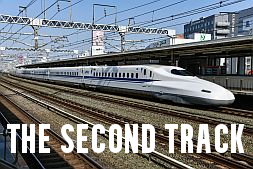My two jiaos worth
I find myself this week facing a problem with the Chinese currency.
The issue is not the controlled exchange rate, which is very much in my favour, but what seems to be an unnecessary proliferation of jiao notes. The jiao (mao in spoken Mandarin) is an intermediate unit in the RMB currency system; ten fen make a jiao, ten of which make a Yuan (usually spoken kuai).
Over two weeks in Beijing I have accumulated such a stack of these tattered, world-worn lolly wrappers that I’ve had to take them out of my wallet so I can close it. I’m going to have to think of a disposal strategy.
It is difficult to avoid amassing such a collection; practically every taxi driver and shop attendant is determined to give them too you. Even in this most developed part of China cash is still king.
The average Chinese is only gradually warming to the concept of paying for things with a magical swipe of an enchanted piece of plastic. They are right to be cautious, even cash is suspect.
Don’t be offended when handing someone a hundred kuai note if the first thing they do is hold it up to the light to check the watermark, counterfeit notes are not uncommon. The prudent foreigner is well advised to do the same. Last year my flatmate came into possession of a convincing fake hundred…..straight out of an ATM.
Discussions of the Renminbi (RMB) in the West are dominated by the matter of its appreciation (or lack thereof) against their own currencies and the role of the Chinese government in suppressing its value. But one needs to look at the other side of the coin so to speak.
Beijing must consider how a more robust Yuan would impact not just on its export trade but also upon domestic money supply and the Chinese consumer.
But surely, one might ask, China is already facing rapid inflation and domestic price rises; wouldn’t it make sense to let the Yuan rise in value to offset it? It is not nearly that simple.
The higher the Yuan rises the less each foreign bond China holds can be converted into the local currency to pay local costs; a problem not helped by the already sharp drop in the value of its US bonds or the need to use US dollar holdings to pay for energy and other resource imports.
China is maintaining a delicate three way balance between wage growth, the price of domestically produced consumer goods and maintaining the cost advantage of Chinese manufactures internationally.
Beijing is being asked to simultaneously let its currency rise to reduce the cost advantage of its exports whilst attempting to develop its domestic consumer base. Western countries would of course like to see more of China’s enormous industrial output absorbed within its own markets but they are also asking China to make those products already affected by domestic inflation more expensive and imported goods more competitive.
No wonder they get so irritated.
For my own part, I have one idea to deal with the surplus money in circulation: stop printing one and two jiao notes for a while.
Ross White-Chinnery was born in Wales and spent his childhood in Singapore and Hong Kong before emigrating with his family to Australia in 1995 where he has lived worked and studied since. Ross recently begun travelling back to Asia trying to map out a career path and consider the implications of the shift in the balance of influence from West to East. With an academic background is in Politics and History his interests encompass the social and cultural aspects of these.







